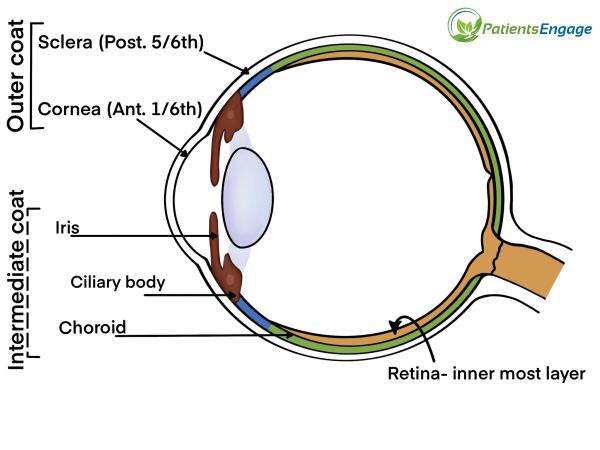
What is Uveitis?
Uveitis refers to inflammation in the middle layer of the eye, also called the uvea. This layer of the eye is rich in blood vessels, and therefore a lot of blood flows through it, making it prone to infections coming into the eye through the blood, as well as to immune reactions. In practice however, uveitis is a broad term used to describe inflammation affecting any tissue inside the eye. This may include the retina, retinal blood vessels, and vitreous gel inside the eye. Most often, patients have more than one type of tissue affected, including the outermost layer or sclera (the white part of the eye seen from outside), since all these tissues are in contact with each other.

Uveitis content contributed by Dr Soumyava Basu

Dr Soumyava Basu is a Consultant Ophthalmologist with Specialisation in Uveitis & Ocular Immunology at L V Prasad Eye Institute, Hyderabad, India, and heads the Uveitis services of the LVPEI network.
Reference:
1. Whitcup SM, Sen HN. Whitcup and Nussenblatt's Uveitis: Fundamentals and Clinical
Practice. Elsevier Health Sciences; 2021 Mar 31.
2. Rathinam SR, Namperumalsamy P. Global variation and pattern changes in
epidemiology of uveitis. Indian J Ophthalmol. 2007 May-Jun;55(3):173-83.
3. Jabs DA, Busingye J. Approach to the diagnosis of the uveitides. Am J Ophthalmol.
2013 Aug;156(2):228-36.
4. Jabs DA. Immunosuppression for the Uveitides. Ophthalmology. 2018 Feb;125(2):193-
202.
5. Yuen BG, Tham VM, Browne EN, Weinrib R, Borkar DS, Parker JV, Uchida A, Vinoya
AC, Acharya NR. Association between Smoking and Uveitis: Results from the Pacific
Ocular Inflammation Study. Ophthalmology. 2015 Jun;122(6):1257-61.
















